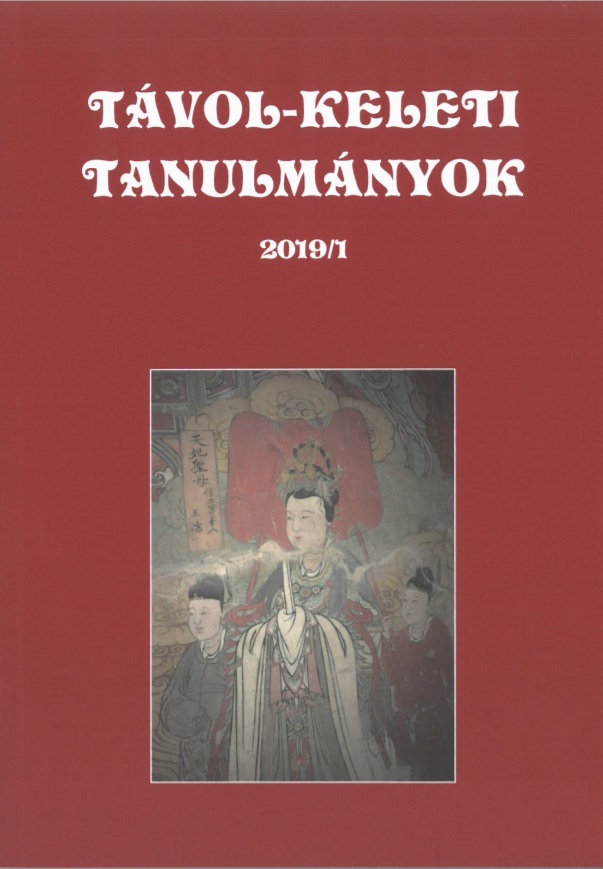The description and analysis of the fencing theory of the Ming era based on the fencing treatises of the Jixiao Xinshu
Published 2020-03-30
Keywords
- Qi Jiguang,
- Jixiao Xinshu,
- fencing theory,
- Ming era
How to Cite
Copyright (c) 2020 the author(s)

This work is licensed under a Creative Commons Attribution-NonCommercial 4.0 International License.
Abstract
The famous 16th century military handbook, Jixiao Xinshu 紀效新書 contains the earliest known surviving treatises on fencing theory in the history of Chinese martial arts. The author, General Qi Jiguang 戚繼光, collected those teachings of fencing theory in the 10th and 12th chapters of the book, considering them necessary in the context of the military application of martial arts. The present paper introduces the difficulties of interpreting the concepts of fencing theory described in Jixiao Xinshu, with a special focus on the problems caused by inconsistent editing, then suggests an interpretational framework that makes it possible give a structured description and analysis of the concepts of fencing theory in Jixiao Xinshu. Finally, placing the sources in the mentioned framework, the paper examines Ming era military fencing theories in detail.
References
- Qi, Jiguang 戚繼光 1782. Jixiao xinshu 紀效新書 [Új értekezés a katonai hatékonyságról]. (SKQS ed.)
- Yu, Dayou 俞大猷 1782. "Jian Jing劍經 [Értekezés a kardról]" In: Qi Jiguang 戚繼光. Jixiao Xinshu 紀效新書 [Új értekezés a katonai hatékonyságról]. (SKQS ed.)
- Zhang, Tingyu 張廷玉 (ed.) 1739. Ming Shi 明史 [A Ming-dinasztia krónikája] (forrás: Wikisource url: https://zh.wikisource.org/wiki/%E6%98%8E%E5%8F%B2 2019. 06. 23.).
- Anonymous ca. 1389. M53. Cod. Hs. 3227a. [Nürnberger Handschrift, Codex Döbringer].
- Bauer, Matthias Johannes 2016. "Teaching How to Fight with Encrypted Words: Linguistic Aspects of German Fencing and Wrestling Treatises of the Middle Ages and Early Modern Times". In: Jaquet, Daniel - Verelst, Karin - Dawson, Timothy (eds.) Late Medieval and Early Modern Fight Books: Transmission and Tradition of Martial Arts in Europe (14th-17th Centuries). Leiden-Boston: Brill, 47-61. https://doi.org/10.1163/9789004324725_005
- Bowman, Paul 2015. "Asking the Question: Is Martial Arts Studies an Academic Field?". Martial Arts Studies 1: 3-19. https://doi.org/10.18573/j.2015.10015
- Burkart, Eric 2016. "Limits of Understanding in the Study of Lost Martial Arts". Acta Periodica Duellatorum 4.2: 5-30. https://doi.org/10.1515/apd-2016-0008
- Clements, John 2016. "Problems of Interpretation and Application in Fight Book Studies". In: Jaquet, Daniel - Verelst, Karin - Dawson, Timothy (eds.) Late Medieval and Early Modern Fight Books: Transmission and Tradition of Martial Arts in Europe (14th-17th Centuries). Leiden-Boston: Brill, 189-215. https://doi.org/10.1163/9789004324725_009
- Guo, Elisabeth - Kennedy, Brian 2005. Chinese Martial Arts Training Manuals; A Historical Survey. Berkeley, California: Blue Snake Books.
- Li, Jiyuan 李吉远 2018. Mingdai Wushushi Yanjiu明代武术史研究 [A Ming-kori harcművészet-történet vizsgálata]. Zhongguo Shehui Kexue Chubanshe中国社会科学出版社.
- Lorge, Peter 2012. Chinese Martial Arts: from antiquity to the twenty-first century. New York: Cambridge University Press. https://doi.org/10.1017/CBO9781139029865
- Marozzo, Achille 1536. Opera Nova. (Wilson, William trans.) Modena: D. Antonio Bergolae. (Forrás: Wiktenauer. url: https://wiktenauer.com/wiki/Achille_Marozzo. 2019. 06. 23.)
- Ren, Hong 任鸿 2016. Shoubilu, Wuyinlu Shiyi - Mingdai Qiangfa Duanbing Jiemi 手臂录·无隐录释义:明代枪法短兵解密 [A Shoubilu és a Wuyinlu interpretációja - a Ming-kori lándzsavívás és rövidfegyverek titkainak megfejtése]. Shanxi Kexue Jishu Chubanshe山西科学技术出版社.
- The Association for Renaissance Martial Arts Definitions & Study Terminology. http://www.thearma.org/terms2.htm (2019. 06. 23.).
- Twitchett - Fairbank (eds.) 2008. The Ming Dynasty, 1368-1644, Part I. [The Cambridge History of China 7.] New York: Cambridge University Press.
- Windsor, Guy 2018. The Theory and Practice of Historical Martial Arts. Spada Press.

